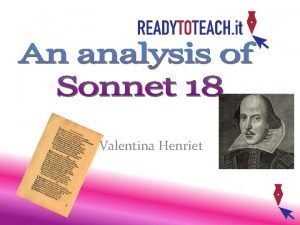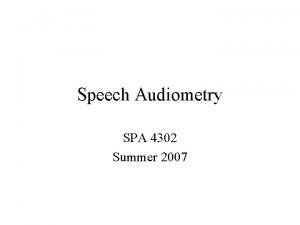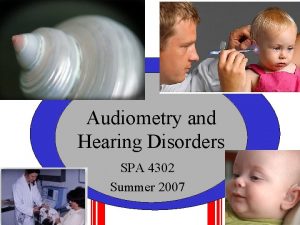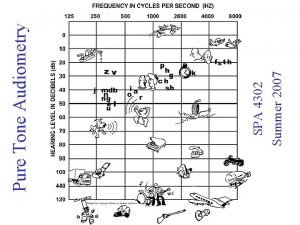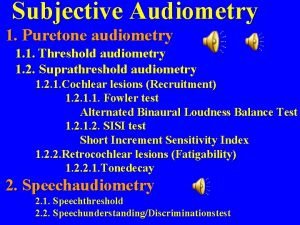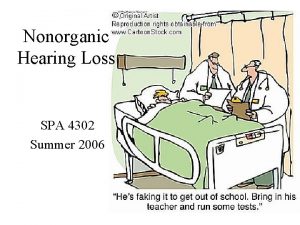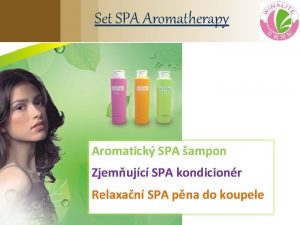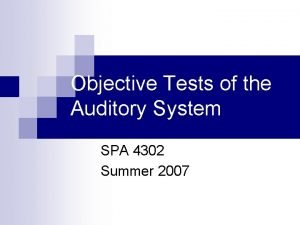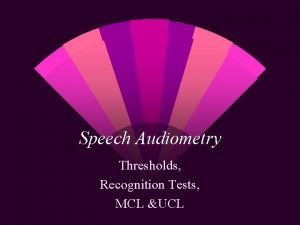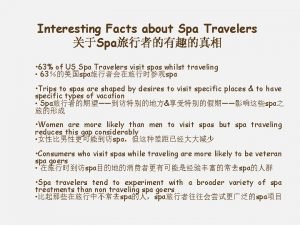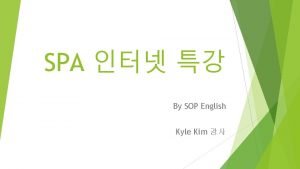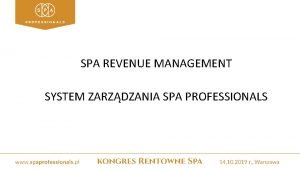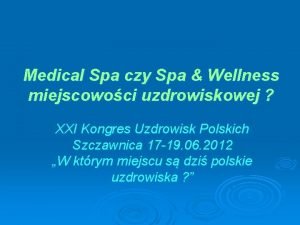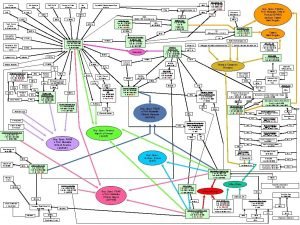Speech Audiometry SPA 4302 Summer A 2004 The























- Slides: 23

Speech Audiometry SPA 4302 Summer A, 2004

The Diagnostic Audiometer Equipped with • Inputs for microphones, cassette tapes, or CDs • Volume unit (VU) meters • Circuit for masking noise or mixing noise with speech in the same ear • Ability to test monaurally or binaurally • Intensity levels ranging from -10 to 110 d. B HL • Outputs for auxilliary amplifiers (to speakers) • Talkback system to allow patient/clinician communication from different rooms/booths

The Patient’s Role in Speech Audiometry • Pt must know and be able to respond to word in the language of the test. • Responses: – Verbal repetition – Writing or marking response – Picture pointing – Clicking on choice on computer

The Clinician’s Role in Speech Audiometry • Must be able to convey to pt their task, • Keep face from pt’s view • Understand pt responses

Speech-Threshold Testing • Speech Detection Threshold: lowest level at which the listener can tell that something is there (when the signal happens to be speech). Also called the speech awareness threshold. • Speech Recognition Threshold: lowest level at which the listener can actual identify what the speech stimulus is. Also called the Spondee threshold.

SRT Stimuli: Spondees • 2 -syllable words with equal stress • can be divided into two monosyllables • e. g. , hotdog, baseball, whitewash, mousetrap, birthday, eardrum. . .

Why spondees? • because their intelligibility curves rise from near chance to 100% performance within a few decibels. (see curve 1 in figure 5. 1) • This provides a much more accurate threshold.

SRT Methods • • • Descending Approach Start approx 10 d. B above expected threshold Drop in 5 d. B steps 5 words per level Stop when pt misses 5 out of last 6 words Threshold = start level – number correct + correction factor Adaptive Approach • Like Pure Tone procedure down in 10 d. B steps, up in 5 d. B steps • Up to 4 words per level • Threshold = lowest level at which pt correctly id’s at least 2 words (>50%).

Masking for SRT • If SRT - IA > best BC Thresh NTE • Put in at least: STARTING LEVEL=SRTTE – 35 +ABGNTE But no more than: OVERMASK = EMNTE-IA> Best BC Thresh TE

Most Comfortable Loudness Level • Instructions important: you can strongly influence how a person responds. • "I am going to continue talking to you as I make my voice louder and softer. I will keep asking you to tell me whether my voice is too soft, too loud or comfortably loud. " • Do a number of sweeps in level. • normally between 40 and 55 d. B above SRT

Uncomfortable Loudness Level • Begin at MCL, raise level as you continue to talk. • "I am now going to ask you to tell me how my voice sounds to you as I make it louder. Please tell me if the level is comfortable, a little loud, or uncomfortably loud. ” • Uncomfortable = loud enough so you would not want to listen to my voice for a long time.

Range of Comfortable Loudness • • • (Or the Dynamic Range for Speech) = UCL – SRT Normally 100 d. B or greater Unchanged in conductive losses Can be much smaller in sensorineural hearing loss

Word Recognition Testing • Open set-client can respond with any word he/she set can think of. • Closed set-response options are provided for the set client (multiple choice test). • • Free response-client is free to respond or not. response Forced Response-client must say something. Response [Forced choice = closed set forced response. ]

Phonetically Balanced Word Lists • selection of a group of words so that each phoneme appears with the same frequency it has in the normal lexicon. Based on Thorndike-Lorge lists of words and word frequencies. • So-called PB word lists-- CID W-22 Lists • Four lists of 50 words each.

CNC Word Lists • Consonant-Nucleus-Consonant words • Phonemically balanced • Four 50 -item lists: the NU-6 Word Lists

Alternative Speech Choices • High Frequency Word Lists – Gardner’s Hi Frequency Word Lists – California Consonant Test • Nonsense Syllable Lists – The Nonsense Syllable Test (NST) • Sentence Tests – The Synthetic Sentence Identification (SSI) test – Speech Perception in Noise (SPIN) test – Connected Speech Test (CST)

Children’s Tests • Word Intelligibility by Picture Identification (WIPI) test – six pictures to choose from. • Northwestern University Children’s Perception of Speech (NUCHIPS) test – four pictures to choose from • Monosyllable-Spondee-Trochee test – distinguishing word shapes, not identifying particular words; used in cochlear implant cases.

Performance-Intensity Functions • PI function: word recognition scores obtained at a range of stimulus levels. • Curve reaches a peak (Pbmax), and then • Either remains high (normal), or • Drops at higher levels (Rollover) • Rollover Index = (PBmax – Pbmin)/PBmax

Rollover Indices for the preceding examples • Normal: (100 - 100) / 100 = 0. 0 • Rollover: (44 - 20) / 44 = 0. 54 • Rollover Indices of 0. 45 or greater indicate a neural (VIIIth nerve) problem.

Cross Hearing & the Need to Mask • If Word level (HL)TE – IA > Best BCNTE • Use Pink (Speech) Noise, or white noise • EM = PBHL TE – IA + ABGNTE

Interpreting Word Recognition Scores Score: General Word Recognition Ability: 90 to 100 Within Normal Limits 75 to 90 Slight Difficulty 60 to 75 Moderate Difficulty 50 to 60 Poor < 50 Very poor

Predicting WRS from the audiogram: The AI • The Articulation Index • Audibility Index • “Count the dot” audiogram • If word recognition is poorer than prediction: think neural hearing loss or central disorder.

 Siegalization meaning
Siegalization meaning Shall i compare thee to a summer's day figures of speech
Shall i compare thee to a summer's day figures of speech Các châu lục và đại dương trên thế giới
Các châu lục và đại dương trên thế giới ưu thế lai là gì
ưu thế lai là gì Thẻ vin
Thẻ vin Môn thể thao bắt đầu bằng chữ đua
Môn thể thao bắt đầu bằng chữ đua Tư thế ngồi viết
Tư thế ngồi viết Bàn tay mà dây bẩn
Bàn tay mà dây bẩn Hình ảnh bộ gõ cơ thể búng tay
Hình ảnh bộ gõ cơ thể búng tay Từ ngữ thể hiện lòng nhân hậu
Từ ngữ thể hiện lòng nhân hậu Tư thế ngồi viết
Tư thế ngồi viết Trời xanh đây là của chúng ta thể thơ
Trời xanh đây là của chúng ta thể thơ Voi kéo gỗ như thế nào
Voi kéo gỗ như thế nào V cc cc
V cc cc Thể thơ truyền thống
Thể thơ truyền thống Khi nào hổ mẹ dạy hổ con săn mồi
Khi nào hổ mẹ dạy hổ con săn mồi đại từ thay thế
đại từ thay thế Thế nào là hệ số cao nhất
Thế nào là hệ số cao nhất Diễn thế sinh thái là
Diễn thế sinh thái là Vẽ hình chiếu vuông góc của vật thể sau
Vẽ hình chiếu vuông góc của vật thể sau Slidetodoc
Slidetodoc Làm thế nào để 102-1=99
Làm thế nào để 102-1=99 Thế nào là mạng điện lắp đặt kiểu nổi
Thế nào là mạng điện lắp đặt kiểu nổi Mật thư tọa độ 5x5
Mật thư tọa độ 5x5

